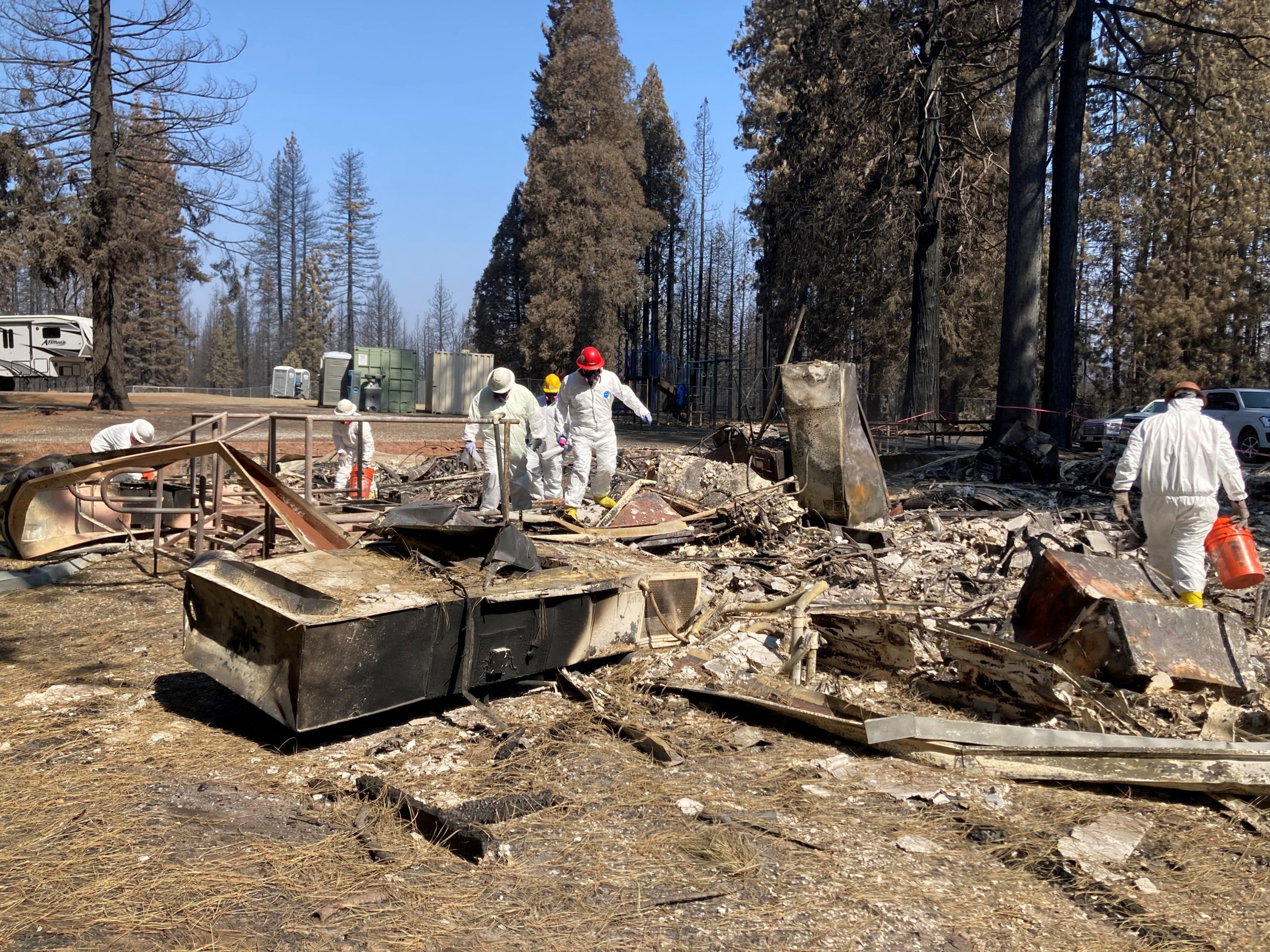GRIZZLY FLATS, Calif. – Continuing to work rapidly to help communities affected by the Caldor Fire respond and recover, the California Governor’s Office of Emergency Services (Cal OES) continues operations to remove fire-related structural debris, concrete, ash, and contaminated soil from properties enrolled in the state’s Consolidated Debris Removal Program (Program). Crews are also working to remove more than 16,000 hazard trees that have been determined to pose a hazard to public roads and infrastructure.
Following early winter storms, debris removal operations were paused until conditions were safe for crews to resume. Work has returned to Grizzly Flats, with crews overseeing the removal of wildfire debris from more than 400 properties.
In total throughout El Dorado County, crews have already completed debris removal on 79 percent of the nearly 600 parcels.
“Residents of the Grizzly Flats community have dealt with a tremendous loss due to the destruction caused by the wildfire and winter storms,” said Cal OES Deputy Director Ryan Buras. “We are determined to continue working with local, state, and federal partners to ensure that properties are safe and ready for rebuilding so homeowners and their families can return home.”
The Program consists of two phases. Phase One involves the removal of household hazardous waste (HHW) such as batteries, cleaners, oils, and easily identifiable asbestos. Phase One work in El Dorado County is complete.
With Phase One complete, crews move onto Phase Two. During Phase Two, Cal OES coordinates with the California Department of Resources Recycling and Recovery (CalRecycle) and local officials to clear enrolled properties of structural debris.

Crews work to remove HHW in Grizzly Flats
Steps Left to Complete
Before homeowners can begin rebuilding, cleared properties need additional work including:
- Separate contractors collect soil samples for verification at a laboratory that they meet state environmental health and safety standards.
- Contractors next may install erosion control measures.
- Certified arborists or professional foresters assess wildfire-damaged trees in danger of falling on the public or public infrastructure for removal by separate contractors.
- Finally, state officials inspect the property to verify all completed work meets state standards. Debris officials submit a final inspection report to local officials to approve the property for reconstruction.
Property owners can track progress on the Debris Operations Dashboard for the 2021 statewide wildfires. The dashboard is updated every hour and provides users with the ability to search by county or address.

